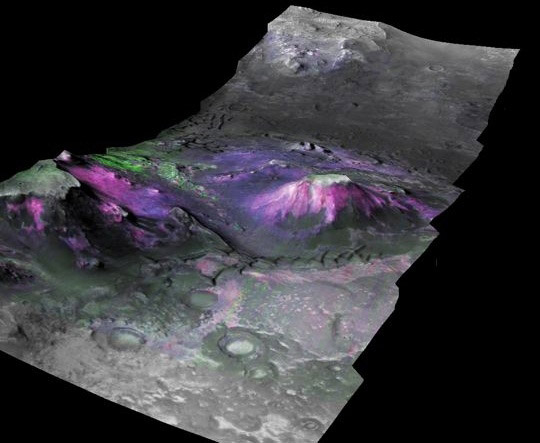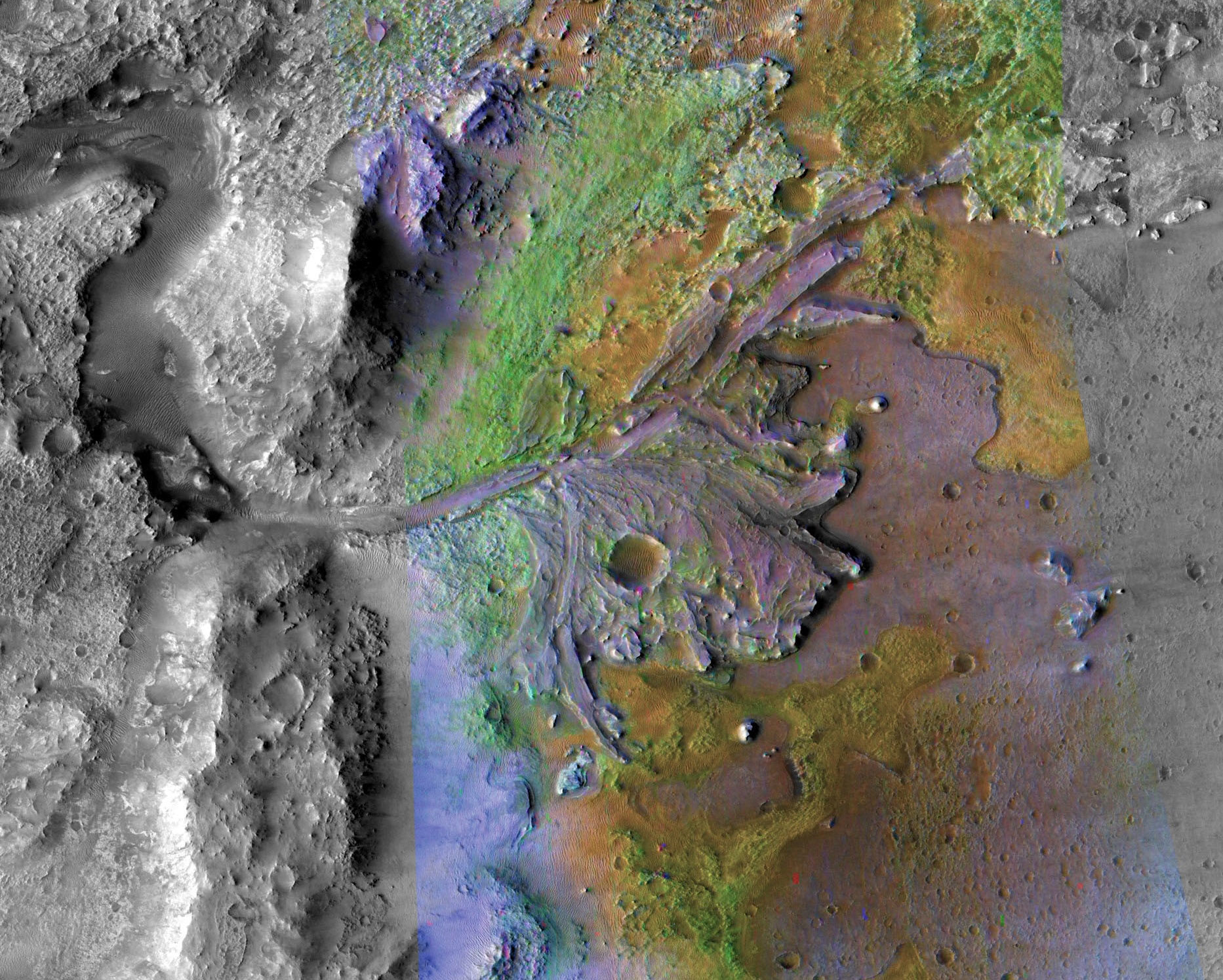Press Release
New Findings Show Diverse, Wet Environments on Ancient Mars
Wed, 07/16/2008 - 12:43
Mars once hosted vast lakes, flowing rivers and a variety of other wet environments that had the potential to support life, according to two new studies based on data from the Compact Reconnaissance Imaging Spectrometer for Mars (CRISM) and other instruments on board NASA's Mars Reconnaissance Orbiter (MRO).
"The big surprise from these new results is how pervasive and long-lasting Mars' water was, and how diverse the wet environments were," says Scott Murchie, CRISM's principal investigator at The Johns Hopkins University Applied Physics Laboratory (APL), in Laurel, Md.
One study, published in the July 17 issue of Nature, shows that vast regions of the ancient highlands of Mars—which cover about half the planet—contain clay minerals, which can form only in the presence of water. Volcanic lavas buried the clay-rich regions during subsequent, drier periods of the planet's history, but impact craters later exposed them at thousands of locations across the planet.
The clay-like minerals, called phyllosilicates, preserve a record of the interaction of water with rocks dating back to what is called the Noachian period of Mars' history, about 4.6 to 3.8 billion years ago. This period corresponds to the earliest years of the solar system, when Earth, the moon and Mars sustained a cosmic bombardment by comets and asteroids. Rocks of this age have largely been destroyed on Earth by plate tectonics; they are preserved on the moon, but were never exposed to liquid water. The phyllosilicate-containing rocks on Mars therefore preserve a unique record of liquid water environments—possibly suitable for life—in the early solar system.
"The minerals present in Mars' ancient crust show a variety of wet environments," says John Mustard, a member of the CRISM team from Brown University in Providence, R.I., and lead author of the Nature study. "In most locations the rocks are lightly altered by liquid water, but in a few locations they have been so altered that a great deal of water must have flushed though the rocks and soil. This is really exciting because we're finding dozens of sites where future missions can land to understand if Mars was ever habitable and if so, to look for signs of past life."

